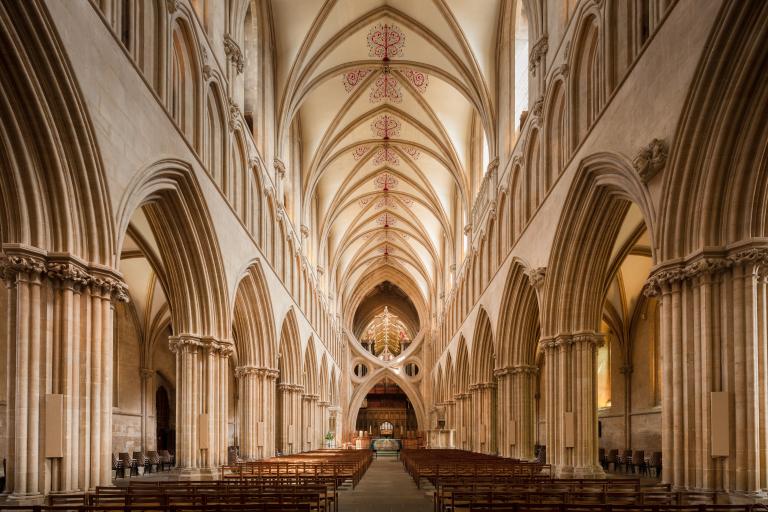God wants to meet with us.
It goes both ways: we want to meet with God. Something deep in our human being yearns for more, to commune, meet with and contemplate divinity.
But we often think of contemplation as something that only monks do, something that is an escape, something for people who have more time and care less about the world’s crises of injustice. The ways that people contemplate God in the Bible are the opposite of these stereotypes.
Contemplation in the Bible is earthy, embodied, active, and focused on this world.
The characters of the Bible are contemplative exemplars. Not only do they love God with all their heart, soul, and minds, but they also encounter God in community and actual physical space.
Space matters in the spiritual life. How we conceive of space can help illuminate the sacred dimension of our ordinary lives and moments. This is why, regardless of faith tradition, beauty in churches, temples, or mosques still stirs hearts. From awe-inspiring stained glass and frescoes to stripped-down and sparse Protestant meetinghouses, sacred spaces contain spiritual power to stir us when we step inside them.

The conception of sacred space in the Bible evolves. Its evolution goes something like this: the ancient Israelites first start meeting God in a tent. Then they have a king, conquer territories, and erect a temple. They meet God in an actual building, and they create a system of sacrifice and laws to align with their desire to meet God in that building. Then, for Christians, Jesus comes along. He critiques the ways that Judaism’s sacred building and leaders have participated in the oppression of others. Then, Jesus (a Jew, for those who may be tempted to forget) in John’s gospel claims to replace the Temple through his own ministry and body. The apostle Paul presses the message even further. He writes to Jesus followers in Corinth and says, “hey, you, you are temples of the Holy Spirit.”
We start meeting God in tents and then we move onto temples and then we move onto a saving figure until we realize that we can meet with God everywhere.
In the ancient Hebrew imagination, sacred space is first physical. The Psalmist cries out, “How lovely is your dwelling place, O Lord God!” For this Hebrew singer, God’s dwelling place is no ethereal realm; it has four walls. The Lord’s courts are the halls and walls of the Jerusalem Temple. Before we can recognize God everywhere we have to start in a particular place.
God’s space is so important in ancient Jewish religion that elaborate rules govern the construction of God’s house. Bible readers often skip over these passages, but they tell a truth. The book of Exodus starts with a liberating bang but then spends the final third of its text detailing exactly how the ancient tribe is to relate and meet with God through physical space. The details are a slow slog, but what they signify is profound.
The Israelites are to create a holy place for God to reside. Before the Jerusalem Temple, while Israelite nomads wandered the wilderness, there is a tabernacle or “Tent of Meeting.” The function of this tent is as it sounds: it is the place where God meets with the people, specifically through the high priest, the intermediary. Inside this holy place are holy objects, such as the ark of the covenant.
Before Indiana Jones impressed the ark of the covenant onto cultural imagination, Exodus 25 tells that this sacred box is to hold the tablets of Torah, the ten commandments. Specific instructions ensue: the ark is to be constructed just so with a special wood called acacia wood. It is to be of certain length, two and a half cubits (three and three-quarters feet long). It is to be overlaid with gold. On the ark’s cover, Israel’s gold welders are to fashion cherubim. Cherubim are, as one scholar puts it, mythical creatures which, “combined the strength, ferocity, and regalness of a lion with the flying capability of a bird and the higher reasoning of a human.” (Elisabeth Block-Smith, Sacred Time, Sacred Space) Cherubim are to sit on the cover of the ark.
In between these mythical, lion-bird-human creatures, on top of the golden ark cover, is something called the mercy seat. The mercy seat is the space in which God dwells. “There I shall meet with you, from above the mercy seat, from between the two cherubim.” (Exodus 25:22)
Once the ancient Israelites meet God, they figure out a way to continue to meet with God. They build a house where God lives, a seat for the divine to sit.
On first glance, the Bible’s intense fixation on temple building projects and interior decorations may seem silly or boring, but deeper truths pulse through these verses.
Space matters because God dwells in actual space. God is not only out there, God is right here!
When it comes to awakening to God, the choice of materials makes a difference. Color can either lift the heart or depress the spirit. How we arrange our homes, conceive lighting, pick out furniture, and choose paint all has spiritual capacity.
Space is sacred.
Given this background of Jewish sacred space, Jesus’s arrival on the scene in the Jerusalem Temple at the beginning of John’s Gospel is that much more outrageous. John, more than the other gospel writers, sees Jesus not only as launching an attack on the economic and political system of the Jerusalem Temple, but as replacing the Temple with his own body. In John 3, Jesus goes into the Temple, fashions a whip of chords, and starts overturning tables and driving people out. “Destroy this Temple,” he says, “and in three days I will raise it up.” John then throws in an interpretive aside; he says, “But he was speaking of the temple of his body.”
Jesus sees his own ministry, and his own body, as an alternative site to meet God. Nothing can stand in the way of meeting God, not even a Temple, a church, or even a religious tradition!
The apostle Paul, in his letter to Jesus-followers in Corinth, takes this theme of sacred space further. Not only do we meet with God in temples, and not only is the person of Jesus a sacred site, but we ourselves are temples of the Holy Spirit. Our own very bodies are the holy of holies, the mercy seat.
Hindu-Christian mystic Raimon Panikkar puts it this way, in his The Rhythm of Being: “We do not have to undertake painful pilgrimages to distant places to find the Divine. The treasure lies underneath our own house, just in our family, in ordinary life, in our beloved, ultimately in our own heart when our interiority has been cleansed of any particle of selfish dust.”
God is everywhere, and the whole earth is full of glory.
Photo by Michael D Beckwith on Unsplash











